Have you ever seen someone wearing a ring with a flat face engraved with a heraldic beast, family coat of arms, or other symbols? If so, you've seen a signet ring. These rings have been a staple in men's fashion for thousands of years, serving both practical and symbolic purposes. But what is a signet ring exactly, and why does it continue to captivate our interests today?
This guide explores the enduring allure of signet rings, delving into their rich history, symbolic meanings, and providing guidance on how to choose and wear these distinguished pieces. Join us and learn to express your unique style and heritage with a signet ring.
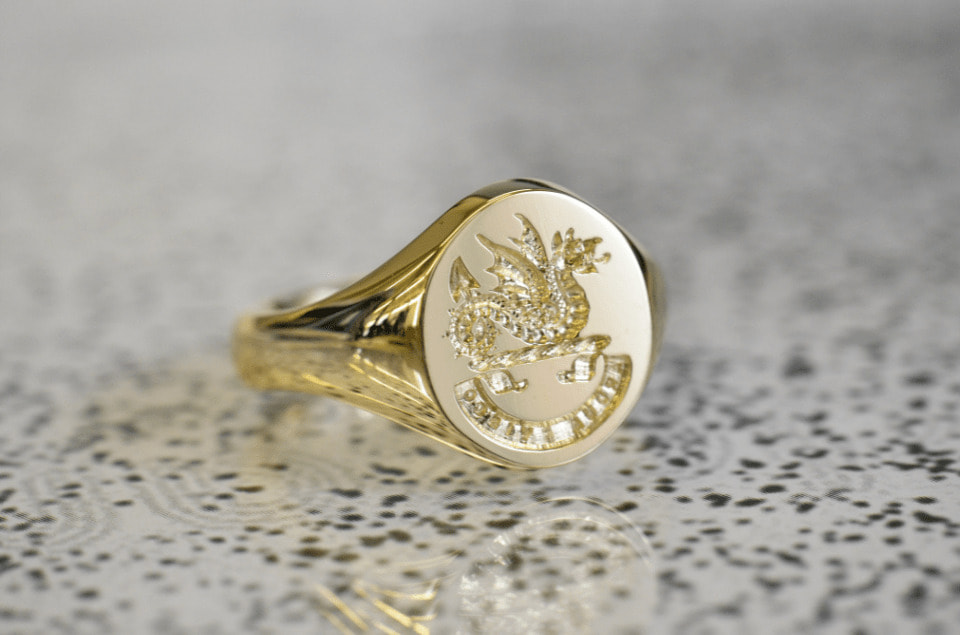
A signet ring, traditionally known as a seal ring, is a ring that features a flat bezel usually engraved with a personalized symbol, initials, or family crest. These engravings are often done in reverse so that when pressed into soft clay or wax, they leave a clear, positive impression. This feature historically served a practical purpose, as signet rings were used to seal and authenticate documents by imprinting the ring's unique design onto molten wax, thus acting as a signature.
In modern times, while the functional use of signet rings for sealing documents has largely faded, their symbolic value remains significant. Today, signet rings are worn as a statement of identity and personal style. They are often passed down through generations as family heirlooms, making them a tangible connection to one's heritage and ancestry. Whether made from gold, silver, or other precious metals, signet rings continue to be a popular choice for those who appreciate their blend of elegance, tradition, and personal significance.
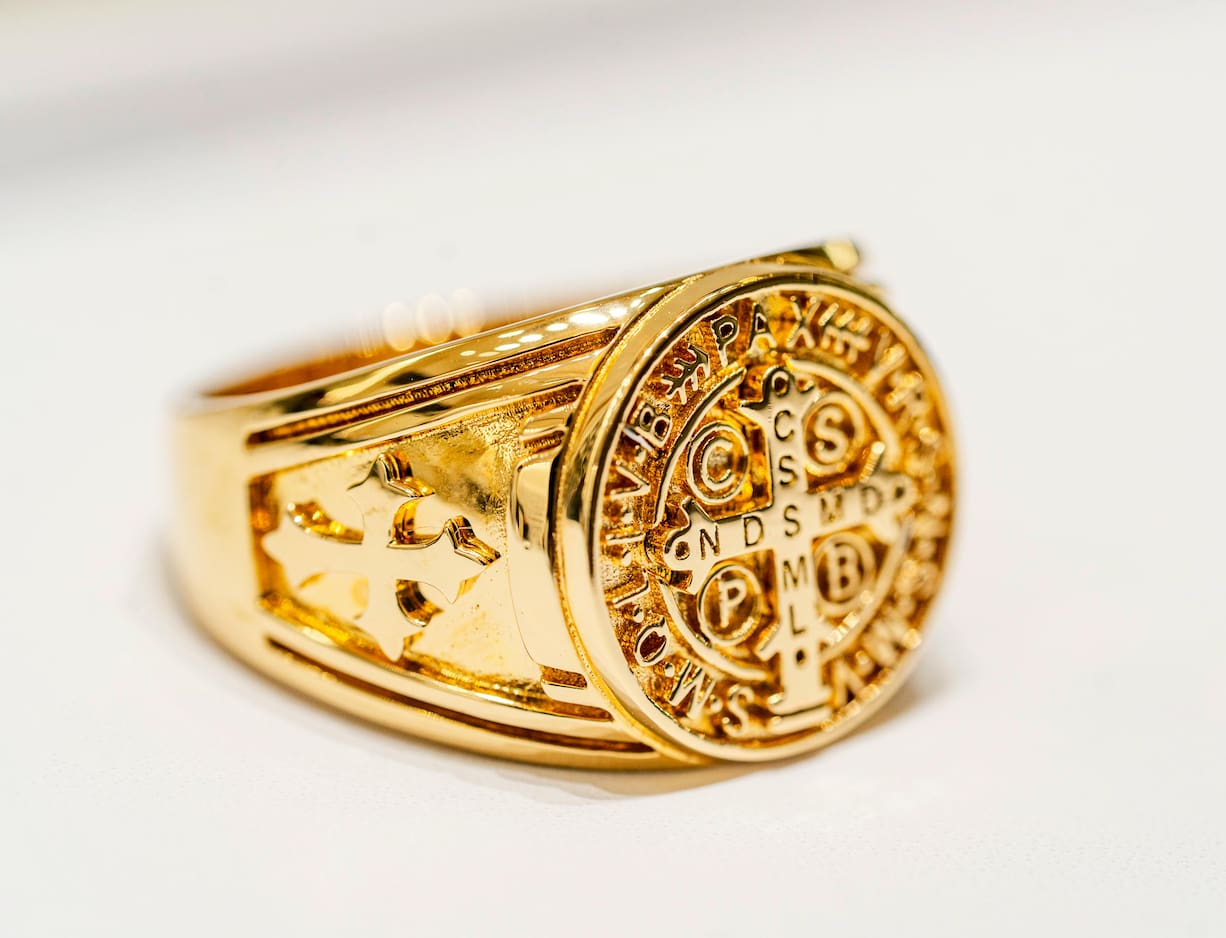
Now that we know what signet rings are, let's delve deeper into their fascinating history. Signet rings, with their rich and storied past, have played a significant role in various societies through the centuries.
Signet rings originated in ancient Egypt around 3500 BCE, where they were used by pharaohs as personal seals. These early rings were crafted from hard stones or precious metals and engraved with hieroglyphs and sacred symbols, linking them directly to the divine. By dipping the ring into hot wax or soft clay, a distinct seal was left on documents, serving as an official signature.
As civilizations evolved, the use of signet rings spread across various cultures. In Ancient Greece and Rome, they became symbols of power and were often used by nobles and government officials. The designs became more intricate, featuring gods, natural scenes, or family emblems. In Rome, wearing a signet ring was a privilege that denoted status and rank, and the rings themselves were considered legally binding representations of the wearer's signature.
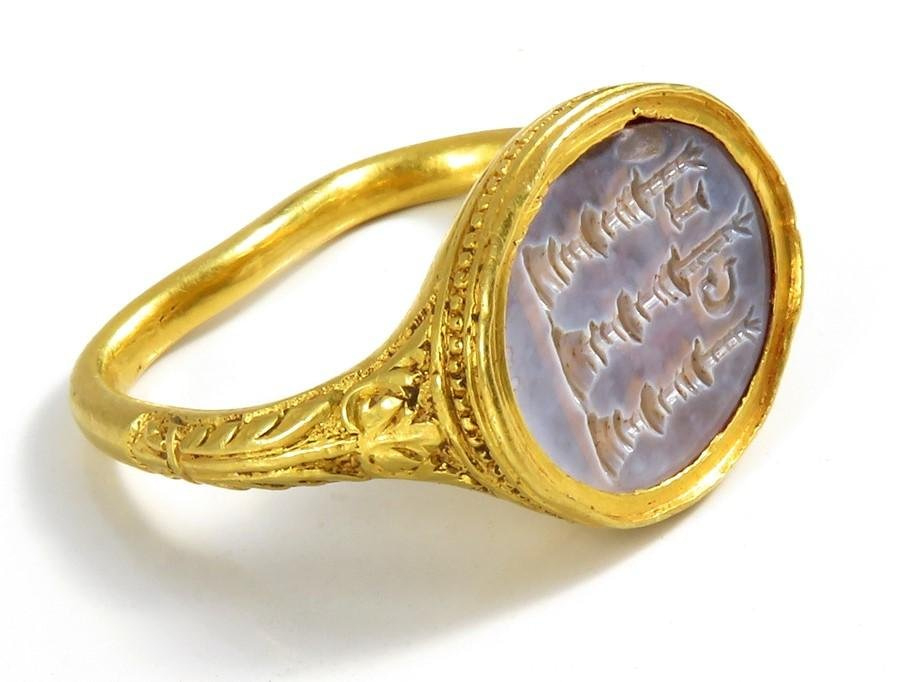
During the Middle Ages in Europe, the signet ring's role expanded as literacy rates were low and the rings provided a practical means of signing documents. The rings were worn by bishops, monarchs, and during the Renaissance by anyone with a coat of arms. They were often worn on the pinky finger of the left hand, a practice that still holds symbolic meaning today.
The Victorian era saw a resurgence in the popularity of signet rings, not just among men but also women, who began to wear these rings as part of their everyday jewelry. This period introduced more decorative elements, though the traditional use for sealing wax persisted in formal correspondence.
In modern times, signet rings are not just remnants of the past but cherished pieces of jewelry that connect individuals to their heritage. They continue to symbolize identity, membership in various groups, and personal milestones. Whether used for their historical significance or as stylish accessories, signet rings remain a timeless link to a rich and fascinating history.
Signet rings have carried deep symbolic meanings through the ages, transcending their original practical uses to become potent emblems of identity and personal belief. Let's have a closer look:
One of the primary symbols associated with signet rings is heritage. These rings have been used for centuries to signify familial lineage and status. Engraved with family crests or coats of arms, signet rings served as a visual representation of one's ancestry and social standing. In many families, signet rings are treasured heirlooms, passed down from one generation to the next, preserving the family's legacy.
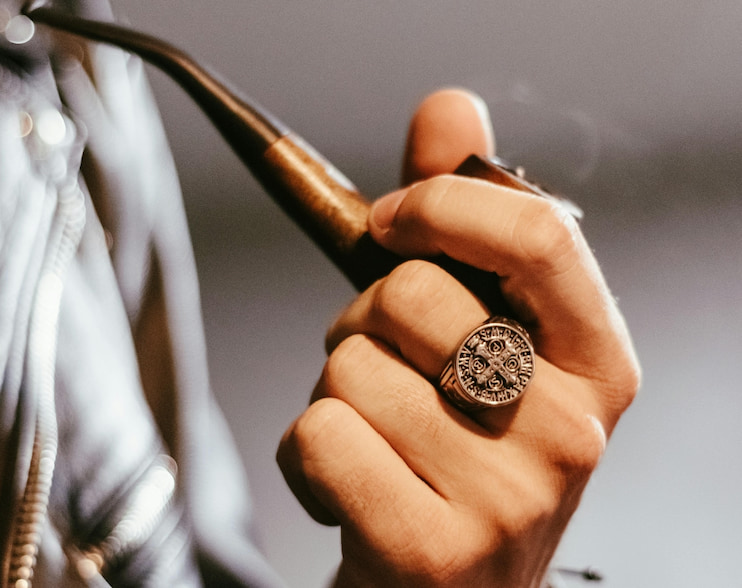
Moreover, signet rings can symbolize professional and personal affiliations. For instance, rings may bear the insignia of a specific trade guild, a university, or a societal organization, signifying membership and one's role within these communities. Such rings are often worn as a badge of pride and accomplishment, signifying the wearer's achievements and their commitment to a particular group or cause.
What does a signet ring mean in contemporary times? In modern contexts, the symbolism of signet rings has also adapted to more personal expressions of style and belief. Many choose to customize their signet rings with symbols that reflect their personal philosophies, monograms, spiritual beliefs, or life's milestones such as like graduations, making each ring a unique testament to the wearer's journey and values.
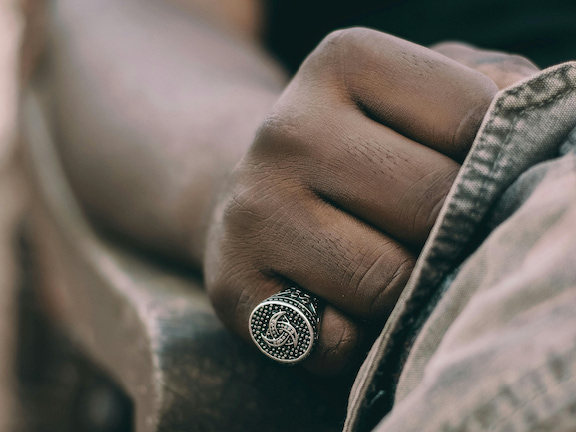
Choosing a signet ring is a deeply personal decision that combines aesthetic preference with considerations of heritage and symbolism. Here are some key factors to consider when selecting the perfect signet ring for yourself or as a gift:
Signet rings are traditionally made from precious metals such as gold, silver, or platinum. Each material has its own characteristics and durability. Gold is classic and resilient, available in various colors like yellow, white, and rose. Silver offers a more understated elegance but requires more maintenance to prevent tarnishing. Platinum is the most durable and is hypoallergenic, making it ideal for those with sensitive skin.
The ring's design is a personal billboard reflecting your style or family heritage. The bezel, the flat surface of the ring, serves as the canvas for engraving initials, family crests, or symbols that have personal significance. When selecting a design, it's important to ensure that the engraving is crisp and readable. Designs with intricate details may need a larger bezel to capture all the nuances.
Signet rings come in various shapes—oval, round, square, or even irregular forms. The shape and size should complement your hand; larger, bolder rings make a statement but might overpower smaller hands, whereas more delicate designs may suit finer features.
Comfort is paramount in a signet ring. It should fit snugly enough to stay secure without restricting circulation. Given their frequent placement on the pinky finger, professional sizing is recommended to accommodate the smaller, often unique size of this finger. A well-fitting ring combines ease with security, ensuring it remains with you without risk of slipping off.
The craftsmanship of a signet ring is a testament to its quality and durability. Opt for a jeweler with a reputation for excellence, one who offers custom design options and can articulate the historical significance of signet rings. Authenticity is crucial, especially when the design involves elements like family crests or symbolic icons. These elements should be crafted with precision and care to maintain the integrity and significance of the ring.
Whether you've inherited a family treasure or selected a design that captures your personal flair, here are some refined tips to wear a signet ring with grace and confidence:
So, what is a signet ring? They are more than just decorative accessories but a timeless link to the past, embodying centuries of tradition and personal expression. The essence of what a signet ring represents—identity, tradition, and personal or familial legacy—resonates deeply with those who wear them. By following our tips on selection and styling, you can find a piece that not only enhances your fashion sense but also connects you to a rich tapestry of history of authenticity and personal pride.
There is no specific age requirement for wearing a signet ring. These rings are steeped in tradition and often symbolize family heritage, so they are sometimes passed down as heirlooms during significant life events such as coming-of-age ceremonies, graduations, or significant birthdays. However, the decision to start wearing a signet ring can also be a personal choice unrelated to age. It depends more on the individual's connection to the meaning behind the ring or their desire to start a new tradition.
Traditionally, signet rings are worn on the pinky finger of either the left or right hand. The choice of hand and finger can depend on personal preference, family tradition, or even practical considerations like hand dominance. Wearing the ring on the pinky of the non-dominant hand is common because it reduces wear and increases visibility. That said, there are no strict rules, and some may choose to wear their signet ring on a different finger that feels more comfortable or significant to them.
Yes, women can absolutely wear signet rings. While historically signet rings were more commonly worn by men, today they are a unisex accessory. Women often wear signet rings as a fashion statement or to carry on family traditions just as men do. The designs, materials, and engravings can be chosen to suit anyone's personal style, making signet rings a versatile and meaningful choice for both women and men.
Learn how to make pearl necklace with our guide. Discover the materials and tools you need, how to design it, and step-by-step instructions to stringing pearls.
Read MoreLearn how to clean jewelry with our guide. Discover the ideal frequency, detailed cleaning steps for different types of jewelry, and how to prevent tarnish.
Read MoreHow do you clean gold jewelry? Learn how often to clean, what materials to use, step-by-step cleaning instructions, and maintenance tips to restore its shine.
Read MoreWhat is a pearl necklace? Discover its historical significance, unique characteristics, popular styles, and tips on how to care for these elegant pieces.
Read More